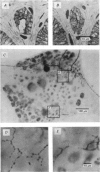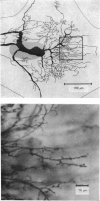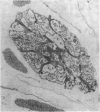Abstract
A method has been devised for killing an individual neurone in the C.N.S. of the leech by injecting it with Pronase. The technique has been used to examine the role of individual sensory and motor cells involved in producing reflex movements.
1. After a neurone was injected with Pronase, either in an intact animal or an isolated ganglion, its cell body lost its resting and action potentials. Some hours later the injected cell's axons in the periphery failed to conduct impulses. In the intact animal the cell body could no longer be discerned after a few weeks.
2. To test for destruction of processes within the neuropile, cells were injected first with the enzyme horseradish peroxidase (HRP) and then several hours later with Pronase. Absence of the characteristic HRP reaction product indicated that Pronase had spread throughout the arborization of the cell.
3. Injection of Pronase into one cell did not produce overt electrophysiological or anatomical changes in other cells in the ganglion including neurones that were originally electrically coupled to the killed cell.
4. Evidence that an individual cell was the only motoneurone supplying particular muscles was provided by destruction of that cell in otherwise intact animals, which resulted in a characteristic motor deficit in the area supplied by the killed cell. Over a period of months, functional recovery of the affected muscles occurred by way of homologous cells in adjacent ganglia.
5. A further application of the technique was to trace the connexion that a particular sensory neurone makes onto two motoneurones that are electrically coupled. Normally, the sensory neurone gives rise to excitatory potentials in both post-synaptic cells. Synaptic potentials could still be recorded in one motor cell after the other had been destroyed by Pronase, indicating that synapses were made directly onto both of the motoneurones.
Full text
PDF

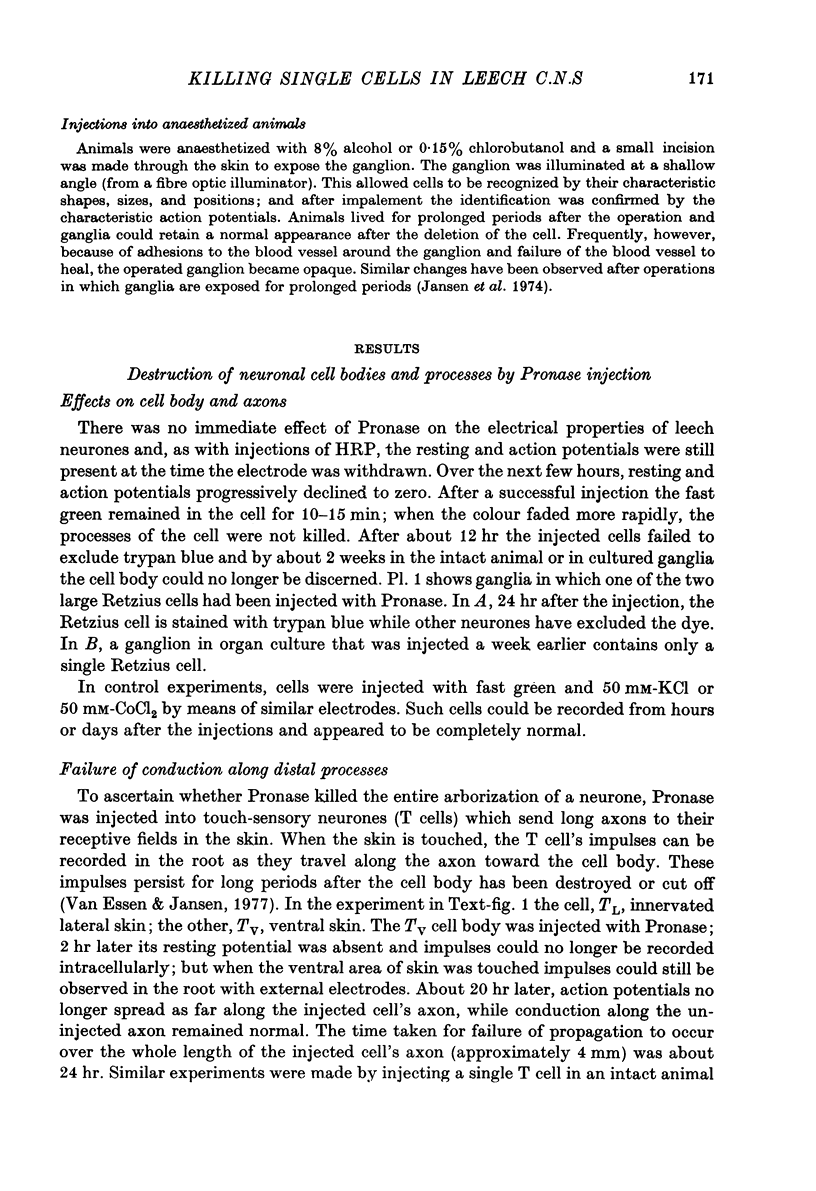

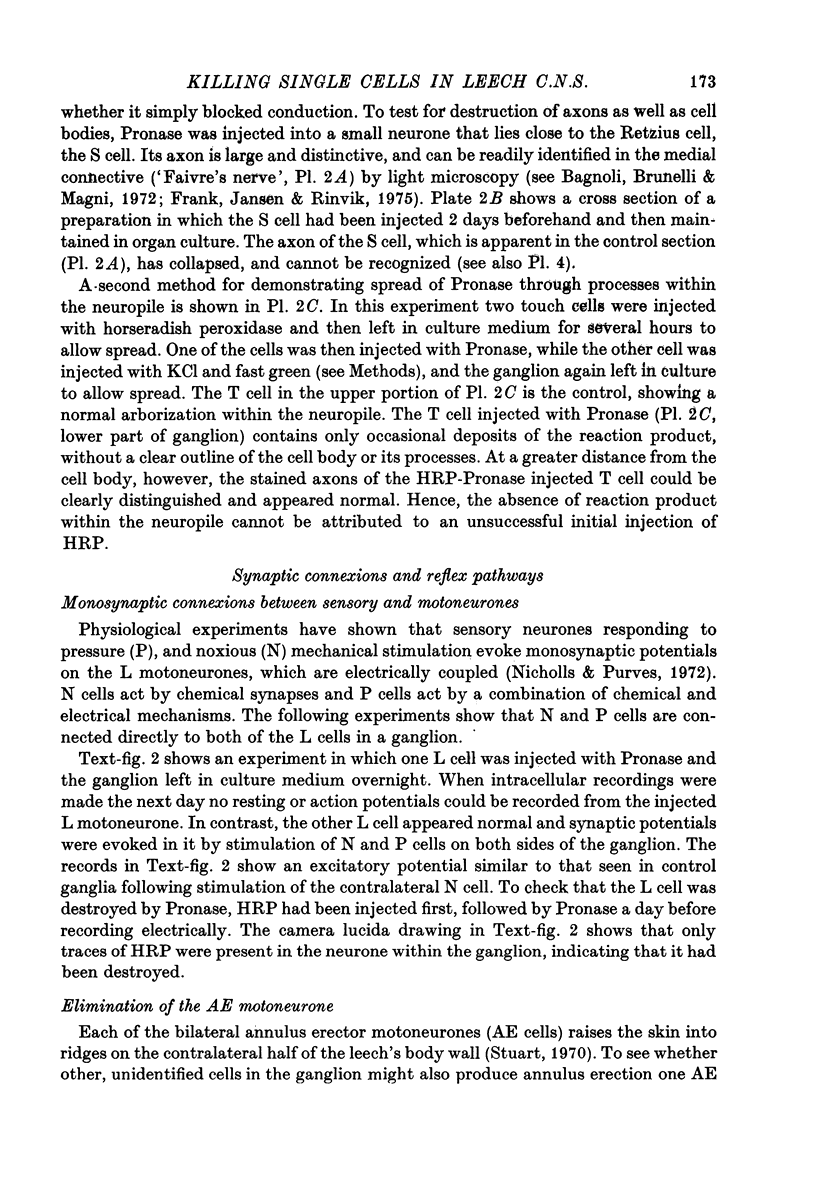

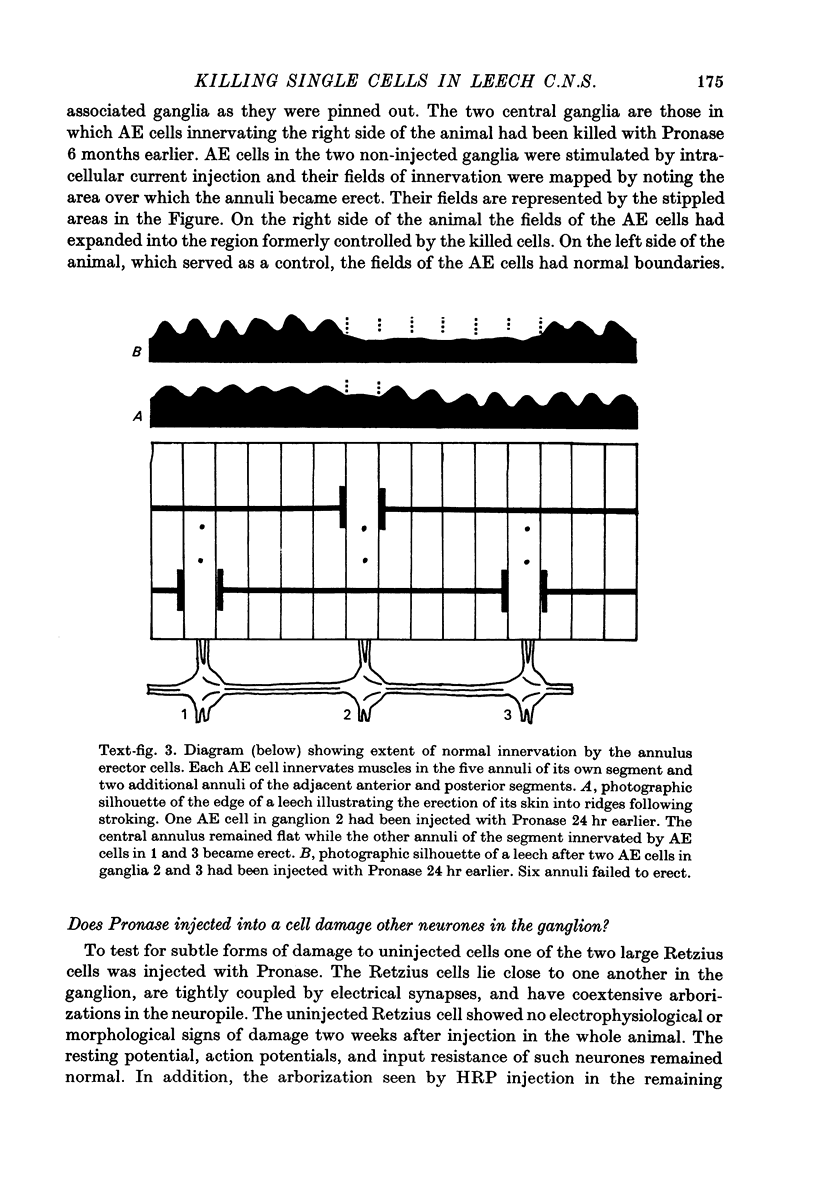
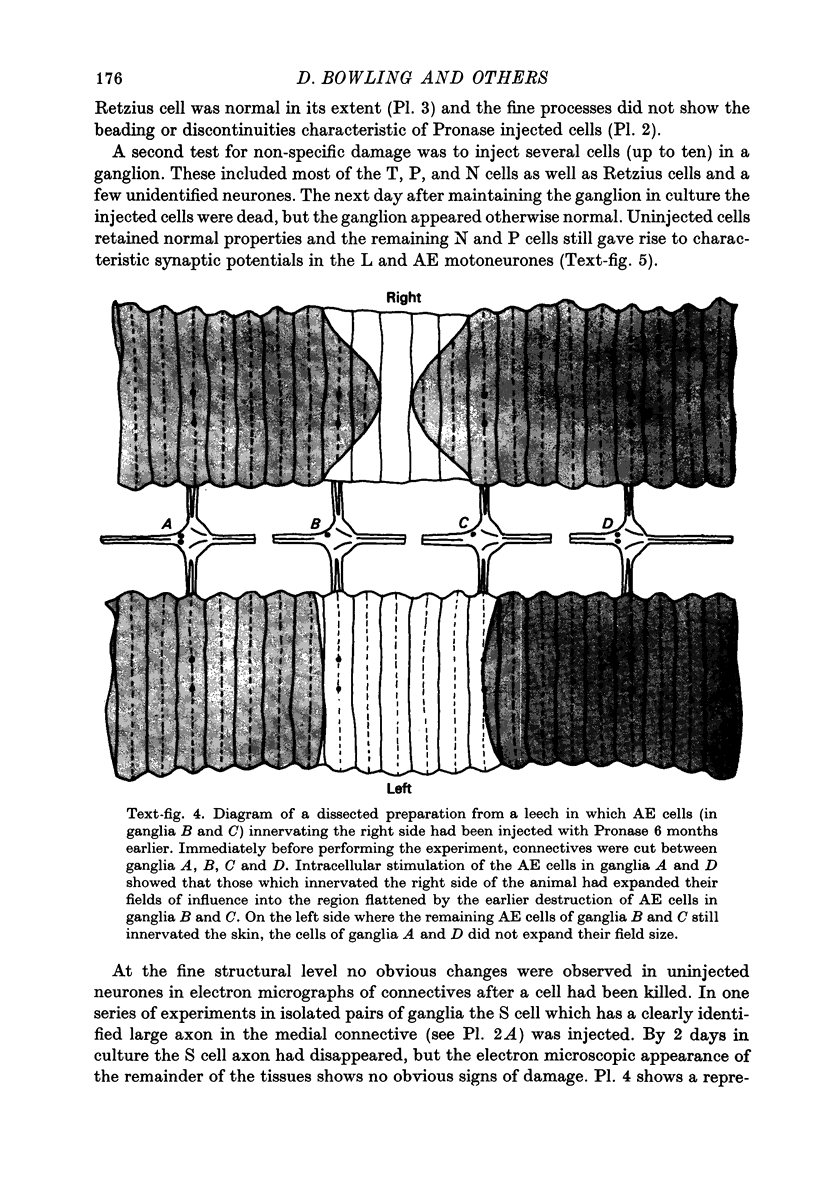

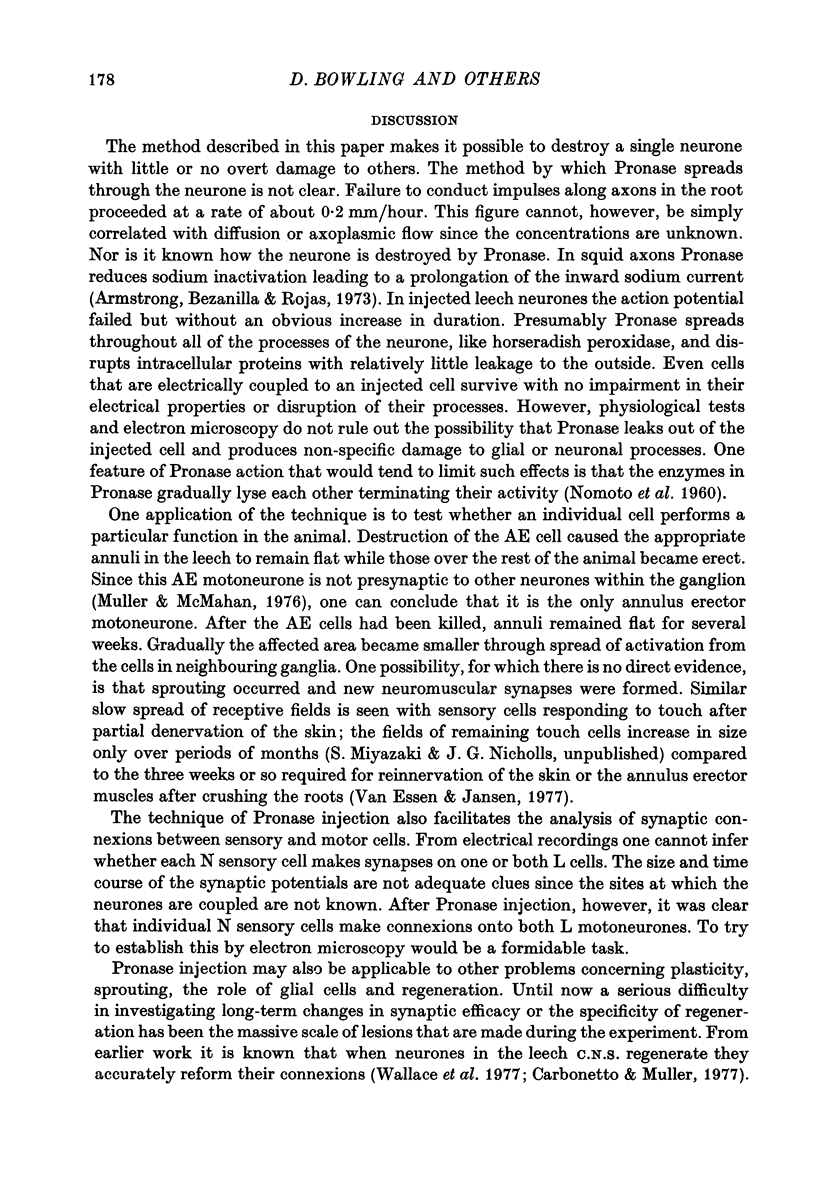

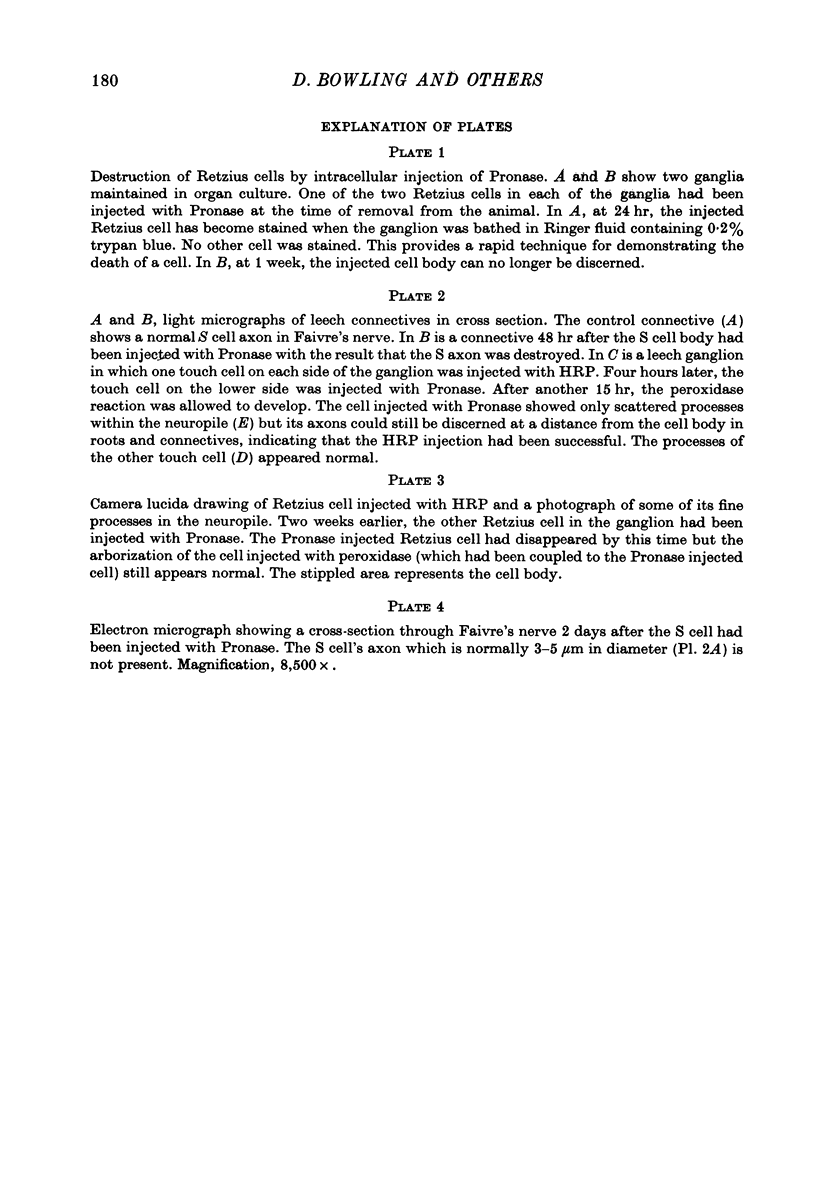
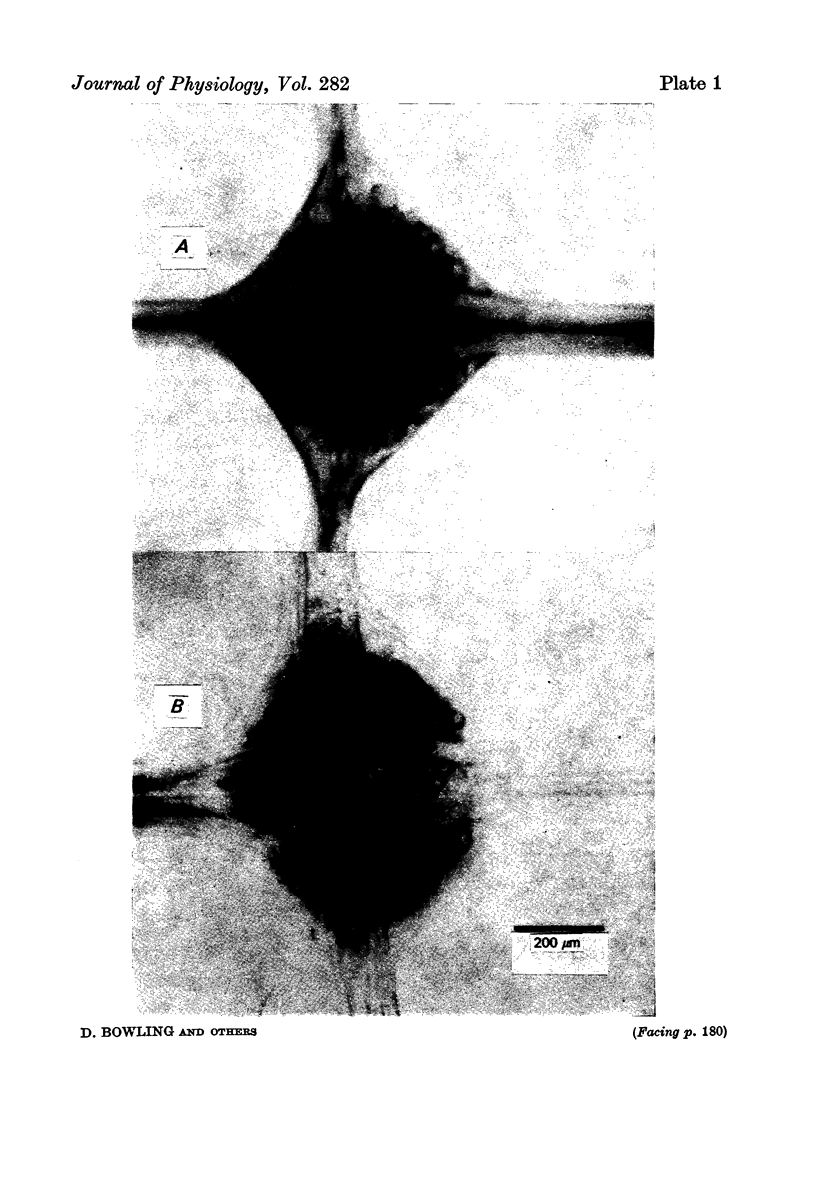
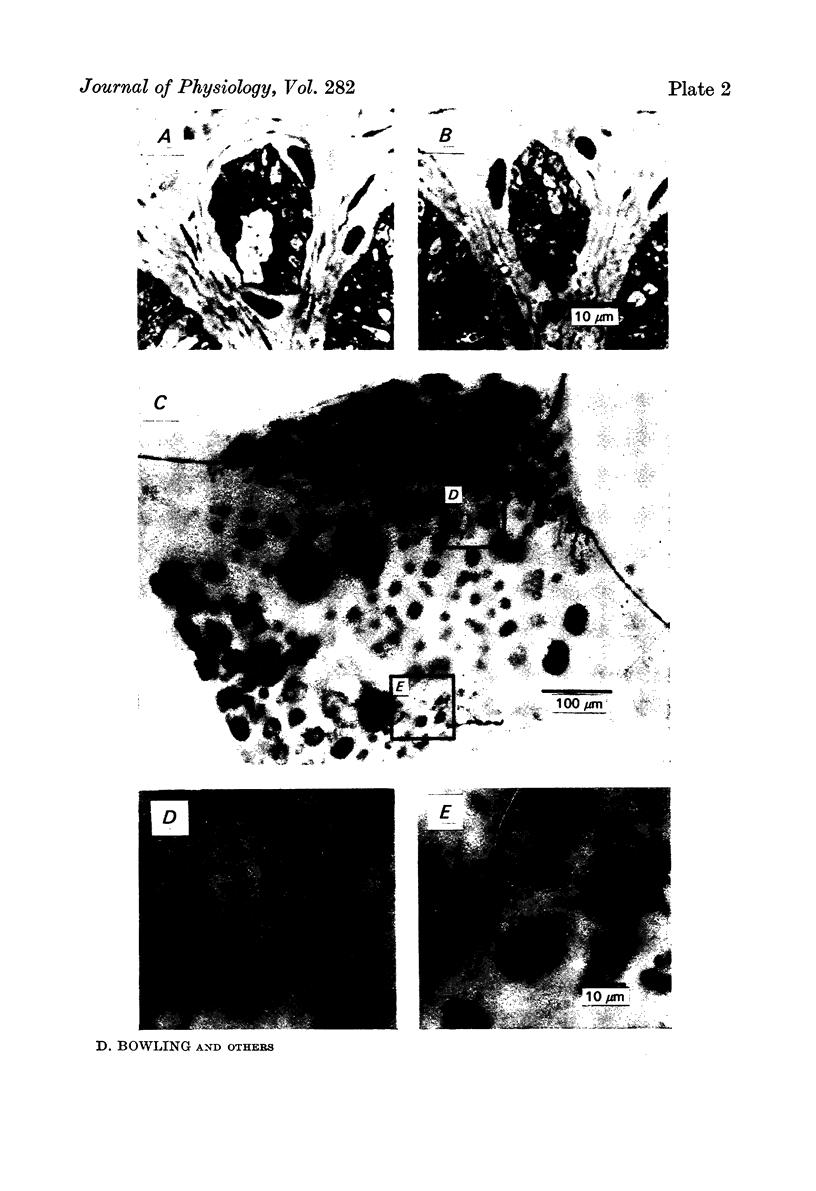
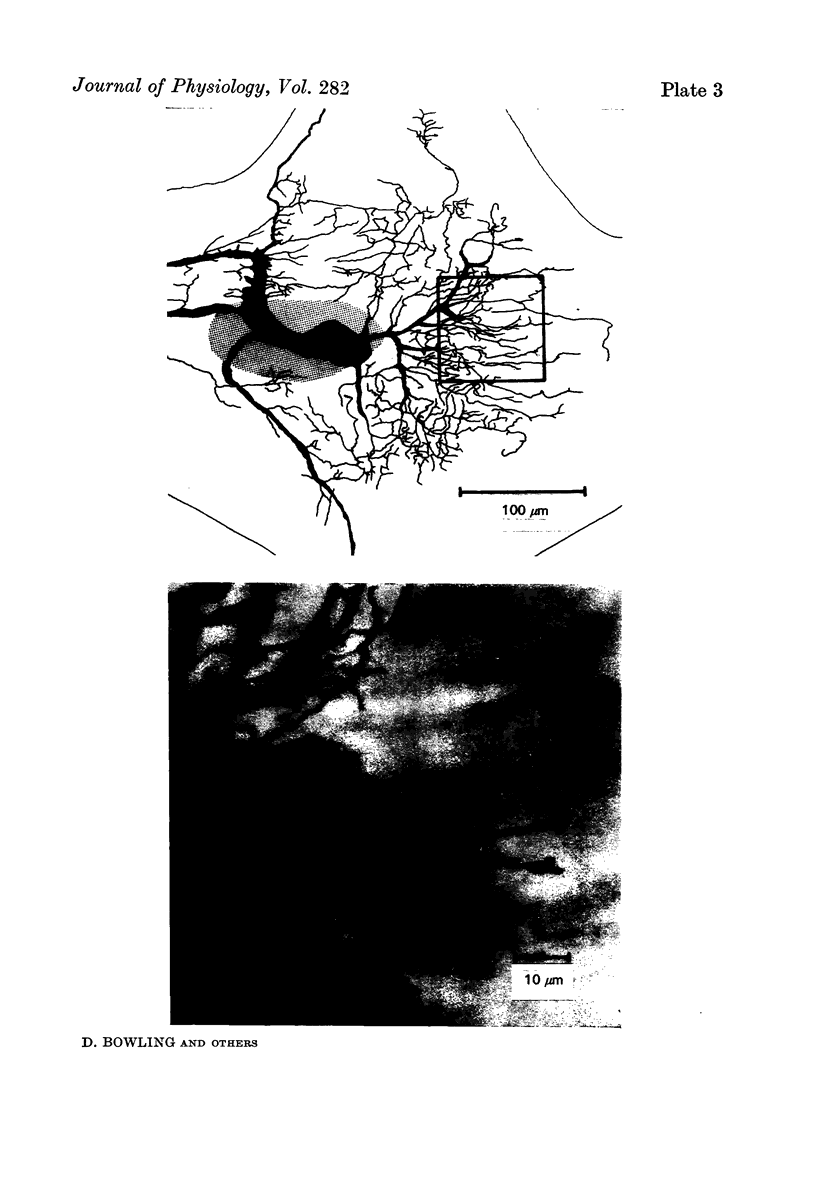

Images in this article
Selected References
These references are in PubMed. This may not be the complete list of references from this article.
- Armstrong C. M., Bezanilla F., Rojas E. Destruction of sodium conductance inactivation in squid axons perfused with pronase. J Gen Physiol. 1973 Oct;62(4):375–391. doi: 10.1085/jgp.62.4.375. [DOI] [PMC free article] [PubMed] [Google Scholar]
- Bagnoli P., Brunelli M., Magni F. A fast conducting pathway in the central nervous system of the leech Hirudo medicinalis. Arch Ital Biol. 1972 May;110(1):35–51. [PubMed] [Google Scholar]
- Carbonetto S., Muller K. J. A regenerating neurone in the leech can form an electrical synapse on its severed axon segment. Nature. 1977 Jun 2;267(5610):450–452. doi: 10.1038/267450a0. [DOI] [PubMed] [Google Scholar]
- Fork R. L. Laser stimulation of nerve cells in Aplysia. Science. 1971 Mar 5;171(3974):907–908. doi: 10.1126/science.171.3974.907. [DOI] [PubMed] [Google Scholar]
- Frank E., Jansen J. K., Rinvik E. A multisomatic axon in the central nervous system of the leech. J Comp Neurol. 1975 Jan 1;159(1):1–13. doi: 10.1002/cne.901590102. [DOI] [PubMed] [Google Scholar]
- Harris W. A., Stark W. S., Walker J. A. Genetic dissection of the photoreceptor system in the compound eye of Drosophila melanogaster. J Physiol. 1976 Apr;256(2):415–439. doi: 10.1113/jphysiol.1976.sp011331. [DOI] [PMC free article] [PubMed] [Google Scholar]
- Hoy R. R., Bittner G. D., Kennedy D. Regeneration in crustacean motoneurons: evidence for axonal fusion. Science. 1967 Apr 14;156(3772):251–252. doi: 10.1126/science.156.3772.251. [DOI] [PubMed] [Google Scholar]
- Jansen J. K., Jr, Muller K. J., Nicholls J. G. Persistent modification of synaptic interactions between sensory and motor nerve cells following discrete lesions in the central nervous system of the leech. J Physiol. 1974 Oct;242(2):289–305. doi: 10.1113/jphysiol.1974.sp010708. [DOI] [PMC free article] [PubMed] [Google Scholar]
- Muller K. J., McMahan U. J. The shapes of sensory and motor neurones and the distribution of their synapses in ganglia of the leech: a study using intracellular injection of horseradish peroxidase. Proc R Soc Lond B Biol Sci. 1976 Nov 12;194(1117):481–499. doi: 10.1098/rspb.1976.0090. [DOI] [PubMed] [Google Scholar]
- Nicholls J. G., Purves D. A comparison of chemical and electrical synaptic transmission between single sensory cells and a motoneurone in the central nervous system of the leech. J Physiol. 1972 Sep;225(3):637–656. doi: 10.1113/jphysiol.1972.sp009961. [DOI] [PMC free article] [PubMed] [Google Scholar]
- Nordlander R. H., Singer M. Electron microscopy of severed motor fibers in the crayfish. Z Zellforsch Mikrosk Anat. 1972;126(2):157–181. doi: 10.1007/BF00307214. [DOI] [PubMed] [Google Scholar]
- Parnas I., Bowling D. Killing of single neurons by intracellular injection of proteolytic enzymes. Nature. 1977 Dec 15;270(5638):626–628. doi: 10.1038/270626a0. [DOI] [PubMed] [Google Scholar]
- Stuart A. E. Physiological and morphological properties of motoneurones in the central nervous system of the leech. J Physiol. 1970 Aug;209(3):627–646. doi: 10.1113/jphysiol.1970.sp009183. [DOI] [PMC free article] [PubMed] [Google Scholar]
- Van Essen D. C., Jansen J. K. The specificity of re-innervation by identified sensory and motor neurons in the leech. J Comp Neurol. 1977 Feb 15;171(4):433–454. doi: 10.1002/cne.901710402. [DOI] [PubMed] [Google Scholar]
- Wallace B. G., Adal M. N., Nicholls J. G. Regeneration of synaptic connections by sensory neurons in leech ganglia maintained in culture. Proc R Soc Lond B Biol Sci. 1977 Dec 30;199(1137):567–585. doi: 10.1098/rspb.1977.0164. [DOI] [PubMed] [Google Scholar]
- Yau K. W. Physiological properties and receptive fields of mechanosensory neurones in the head ganglion of the leech: comparison with homologous cells in segmental ganglia. J Physiol. 1976 Dec;263(3):489–512. doi: 10.1113/jphysiol.1976.sp011642. [DOI] [PMC free article] [PubMed] [Google Scholar]




